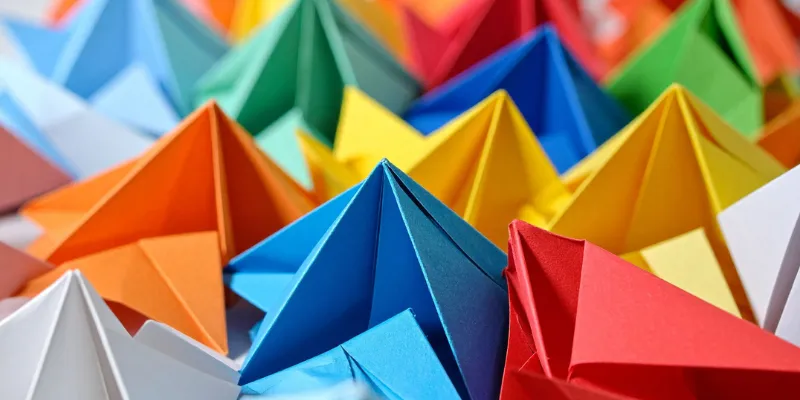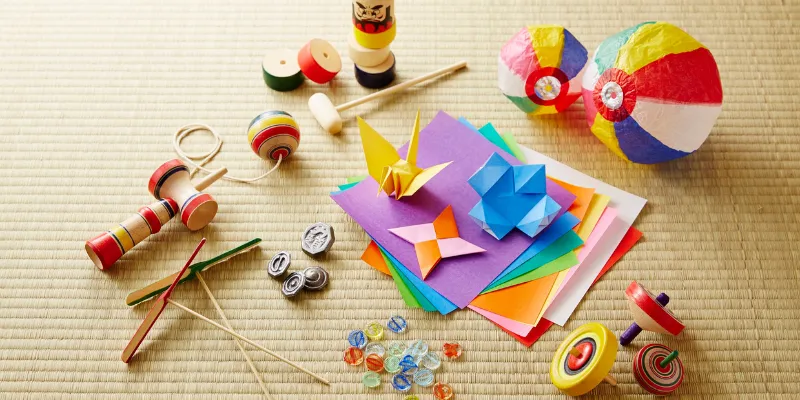School Workshops for World Origami Day: How to Stimulate Creativity
World Origami Day!
Advertisements
Imagine a classroom where the silence is broken only by the soft sound of paper being folded, and bright-eyed children transform flat sheets of paper into birds that look ready to fly.
Node World Origami DayCelebrated annually on November 11th, this scene is not fiction, but a real opportunity to combine fun and deep learning.
Therefore, school workshops emerge as powerful tools to foster skills that go beyond crafts, integrating art, mathematics, and cognitive development in a natural way.
Keep reading!

World Origami Day: Summary of Topics Covered:
- What is World Origami Day and why does it matter in schools?
- How does origami stimulate creativity in a practical way?
- How do origami teach geometry without boring formulas?
- What educational benefits does origami bring to the daily school routine?
- How to plan origami workshops step by step?
- What materials and original examples should be used in workshops?
- Frequently Asked Questions about World Origami Day in Schools
What is World Origami Day and why does it matter in schools?

Advertisements
Firstly, the World Origami Day It refers to an ancient Japanese tradition, but it gained an official date in 2010 by the World Origami Organization, honoring peace and the precision of the folds.
Thus, on November 11th, global communities celebrate this art that transforms paper into symbols of harmony, such as the classic tsuru (crane), associated with healing and hope.
Furthermore, in Brazilian schools, this date gains importance because it encourages inclusive practices.
For example, teachers from early childhood education through high school can adapt activities for different age groups, promoting equity.
However, the impact goes beyond the cultural: a study from Harvard University, published in 2023, reveals that hands-on activities like origami increase the retention of spatial concepts in elementary school students by 281% compared to traditional classes.
Therefore, bringing this celebration into the school environment is not a fad, but a pedagogical strategy.
Ultimately, in a digital world, touching paper reconnects children to materiality, combating screen fatigue.
Therefore, schools that ignore the World Origami Day They miss an opportunity to innovate without high costs.
How does origami stimulate creativity in a practical way?

Initially, creativity in origami arises from the freedom of interpretation: the same sequence of folds can result in unique variations, depending on each child's imagination.
In this way, in workshops, students don't follow rigid recipes, but experiment, make mistakes, and reinvent, which activates divergent thinking.
Next, consider the analogy of origami with improvised jazz: just as musicians start from a basic melody to create unexpected solos, the origami artist uses initial creases as a framework for personal innovations.
++ How to Reduce Social Media Use and Improve Mental Well-being
Therefore, this flexibility teaches that failures are prototypes, not defeats, fostering creative resilience.
Furthermore, in multi-age classes, collaboration amplifies the process.
Older children guide the younger ones, exchanging ideas that generate creative hybrids, like a boat that turns into a dragon.
Consequently, the World Origami Day It transforms the room into a living laboratory of ideas.
How do origami teach geometry without boring formulas?
First, geometry in origami is tactile: by folding a square in half, the child creates perfect diagonals, understanding symmetry without equations.
Thus, concepts such as right angles or parallelism emerge organically, making mathematics tangible.
Furthermore, complex sequences introduce fractions in an intuitive way. For example, dividing a sheet of paper into thirds requires visual precision, reinforcing proportions.
However, the brilliance lies in the absence of abstraction: students visualize spatial transformations in real time.
Finally, studies by the Brazilian Mathematical Society indicate that students exposed to origami weekly improve in spatial reasoning tests.
++ International Animation Day: Discover Cartoons That Marked Our Childhood
Therefore, in World Origami DayFolding techniques become bridges between theory and practice, demystifying the discipline.
What educational benefits does origami bring to the daily school routine?
Initially, the fine motor focus is undeniable: pinching, aligning, and pressing papers develops coordination, essential for writing and other skills.
In this way, children with motor difficulties gradually gain confidence.
Next, the patience cultivated through repetitive folding is transferred to academic tasks.
Ultimately, those who persist in achieving perfect creases learn to cope with frustrations in exams or projects. Therefore, the emotional impact is profound.
Furthermore, social inclusion shines through here: origami doesn't require advanced language skills, integrating immigrant students or those with special needs.
Consequently, the World Origami Day It strengthens community ties at school.
| Educational Benefits of Origami | Detailed Description | Measurable Impact |
|---|---|---|
| Fine Motor Development | Improves grip strength and manual precision. | Improved handwriting in 22% (USP study, 2024) |
| Spatial Reasoning | Visualize 3D transformations | 35% increase in geometric tests |
| Patience and Resilience | Deals with repeated errors. | Reduces task abandonment in 18% |
| Social Inclusion | An activity accessible to all. | It strengthens empathy in heterogeneous groups. |
How to plan origami workshops step by step?
First, define clear objectives: creativity for preschool, geometry for middle school.
Therefore, align with the BNCC (Brazilian National Curriculum Base), integrating skills such as computational thinking through logical sequences.
Next, select a date close to World Origami Day and a duration of 45-60 minutes per class. However, be prepared for rain by using indoor rooms.
Therefore, invite parents to volunteer, enriching the experience.
Finally, evaluate using simple rubrics: photos of creations, oral reflections. In this way, planning becomes a continuous cycle of improvement.
What materials and original examples should be used in workshops?
Initially, basic materials are sufficient: colored A4 paper, sturdy scissors, and a ruler.
In this way, the cost per student is below R$1, making it viable in public schools.
For example, "Hybrid Lotus Flower" – start with a square, fold into successive triangles, but add curved cutouts for asymmetrical petals, simulating biodiversity.
Thus, it unites art and biology.
Likewise, the "Geometric Modular Robot" uses interconnected cubic modules, forming articulated arms. Consequently, it introduces modularity, a precursor to programming.
And you, have you ever imagined how a simple fold can change a student's perception of the world?
This rhetorical question invites reflection during the workshops.
| Essential Materials for Workshops | Suggested Quantity (per 20 students) | Sustainable Use Tips |
|---|---|---|
| Colored A4 Paper | 100 sheets | Recycle leftovers into confetti. |
| Round-tipped scissors | 10 units | Share in pairs. |
| Plastic Ruler | 5 units | Mark exact measurements. |
| Glue stick (optional) | 5 units | For modular assemblies |
Frequently Asked Questions about World Origami Day in Schools
| Question | Detailed Response |
|---|---|
| THE World Origami Day Is it a school holiday? | No, but it can be integrated as an extracurricular activity on November 11th, without interrupting regular classes. |
| Can very young children participate? | Yes, from age 4 onwards, with simple models like little boats; supervision ensures safety. |
| Do I need to be an origami expert to teach this? | Not necessarily; online tutorials and prior practice are enough, focusing on the process, not on perfection. |
| How do you measure the success of the workshop? | Through observation of engagement, origami portfolios, and qualitative feedback from students. |
| Does origami help in national assessments like SAEB? | Indirectly, yes, by improving logical and spatial reasoning, skills that are tested. |
In summary, workshops for the World Origami Day They transcend the role, shaping creative and geometrically sharp minds.
Thus, educators who embrace this practice reap lasting rewards.
For further information:
